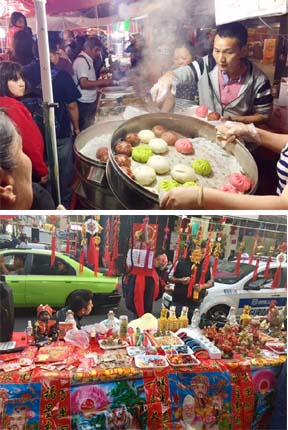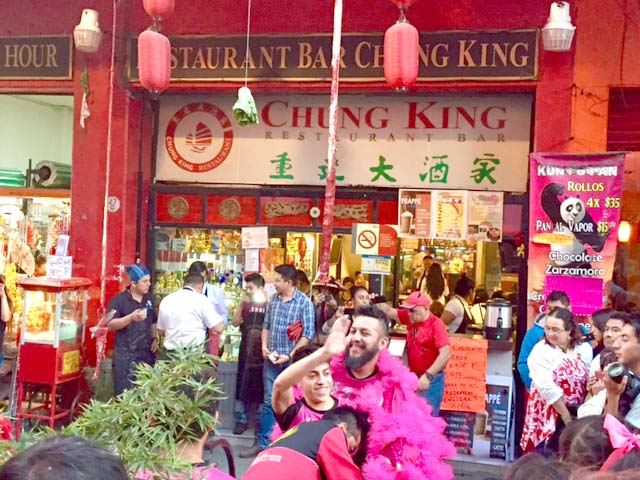
Mexico City’s Chinatown, Barrio Chino, has the distinction of being the world’s smallest Chinatown: it occupies only two blocks on Dolores Street that teems with thriving Chinese restaurants and shops. Close by is a small park with the traditional arch and stone lions.
Jan. 26 to 28 saw in this tiny Chinatown a huge throng of mostly local inhabitants enthusiastically celebrating the Chinese New Year – eating Chinese food, watching lion dances and buying lucky ornaments.
A popular food crowd pleaser is siopao, served with a Mexican twist.
Called pan alvapor or kung-fu pan, these steamed buns come in a great variety of choices: aside from pork and sesame paste fillings, there are buns with chocolate, mint chocolate, egg custard, butter, strawberry and pineapple fillings. The color of the bun indicates the filling. Mexican families share some buns while watching the lion and dragon dances.
There are three groups of traditional dancers, each group composed of Mexican performers and one Chinese Mexican coach.
Lasting four days, the shows start during the afternoon and last until the evening, with each group taking turns to perform. Firecrackers follow after each hour of performance. People watch the dances for good luck and clap enthusiastically when the lions “eat” the pechay that hangs on a string in front of the restaurant or store.
During the weekend, the streets around Barrio Chino hold a massive open-air market called tianguis, a Nahuatl word from the Aztec people. The “s” in the end is silent and sounds similar to the Filipino word tiangge. Vendors sell clothes, toys and appliances. Food stands offer barbecued meat, popcorn and tacos.
One particular favorite is a paper hat with the words “Año Nuevo Chino,” and is worn by both adults and children alike.
Celebrating the beginning of El Año del Gallo (Year of the Rooster) in Mexico’s capital is indeed a surprising cultural encounter of the ancient and modern, with a rich blending of Mexican and Chinese.
The author is a senior systems engineer in Philadelphia, USA. He is a graduate of Ateneo de Manila University and Philippine Academy of Sakya.
